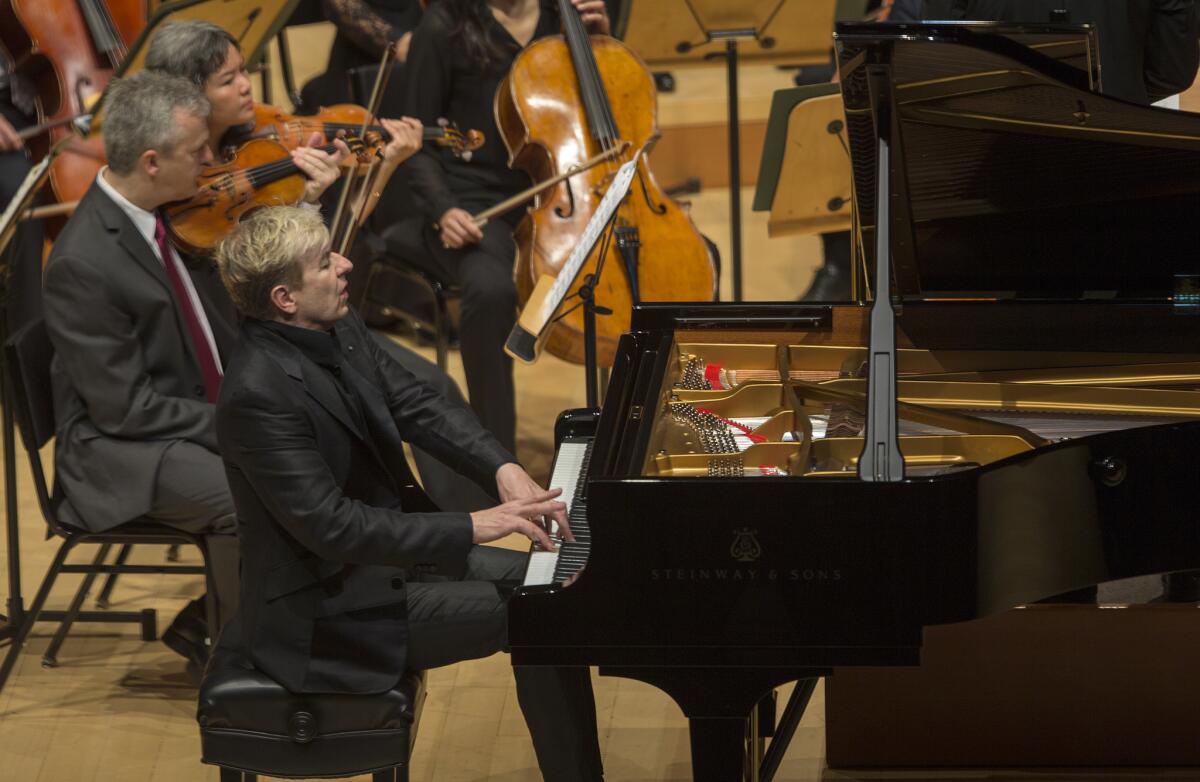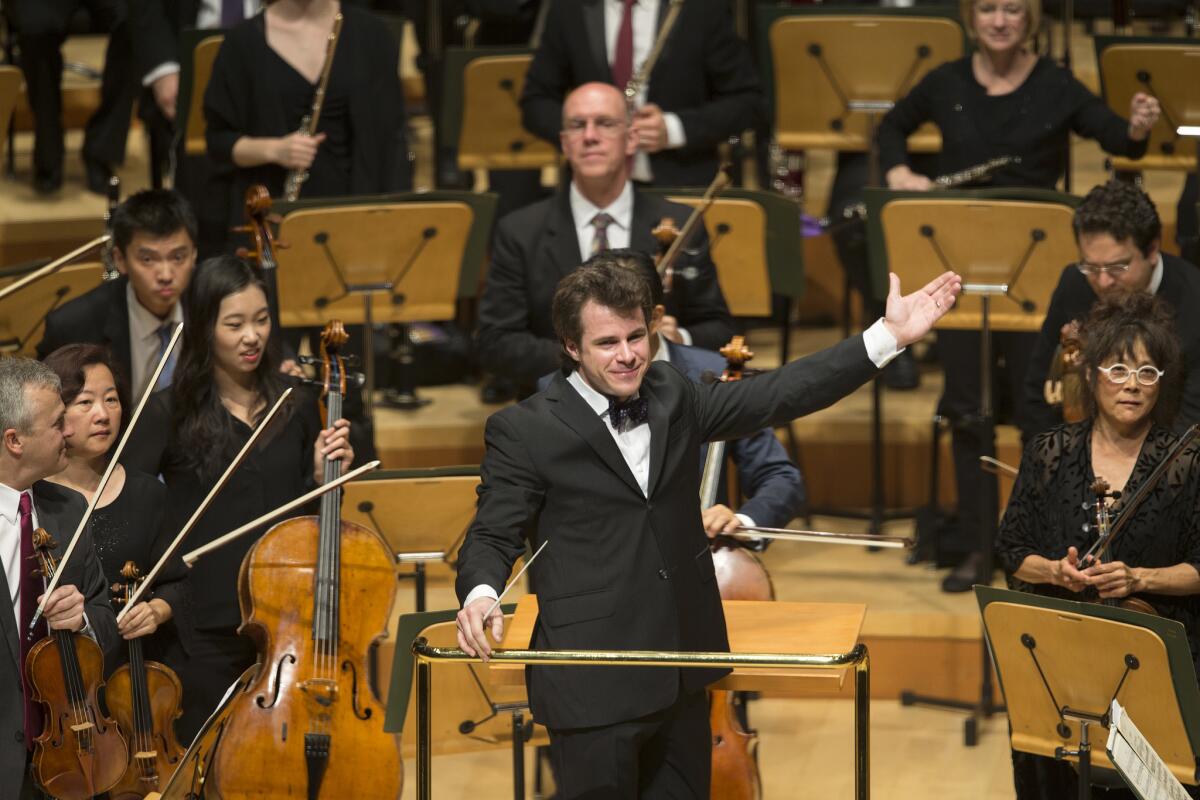Review: Jean-Yves Thibaudet’s lyrical piano brightens L.A. Phil concert

Pianist Jean-Yves Thibaudet performs with the Los Angeles Philharmonic at Walt Disney Concert Hall on April 29, 2016.
- Share via
April may be the cruelest month for some, but not for piano lovers -- at least not at Walt Disney Concert Hall, in a month that has seen impressive performances by Stephen Hough, Alexandre Tharaud, Behzod Abduraimov, Murray Perahia and now Jean-Yves Thibaudet.
Thibaudet gave an alternately lyrical and virtuosic account of Grieg’s crowd-pleasing Piano Concerto on Friday, with Czech conductor Jakub Hrusa leading the Los Angeles Philharmonic in a program that also included works by Mussorgsky and Janacek. (The concert repeats Saturday at 8 p.m.)
For Hrusa, who conducted the L.A. Phil at the Hollywood Bowl in 2013, the concert marked his Disney Hall debut. In October, Hrusa, 34, begins his tenure as chief conductor of the Bamberg Symphony in Germany.

Jakub Hrusa acknowledges the crowd after conducting the Los Angeles Philharmonic at Walt Disney Concert Hall.
He proved a solid leader on Friday. In the concert opener, Mussorgsky’s original 1867 version of his Russian tone poem, “St. John’s Night on Bald Mountain,” Hrusa and the orchestra made the most of the score’s craggy forward sweep. The brasses sounded especially demonic.
In the Grieg concerto, which can come off as episodic, Hrusa conducted with classical restraint, focusing the score’s (and Thibaudet’s) romantic impulses. It was a finely balanced, perfectly paced account, with Thibaudet especially commanding in the Liszt-like cadenza ending the first movement.
Hrusa showcased the L.A. Phil’s muted strings in the lovely central Adagio, and Robert Johnson’s horn playing in a warm duet with Thibaudet was especially impressive. (Johnson is associate principal of the Houston Symphony, on loan while L.A. Phil principal Andrew Bain is on vacation.) The conductor effectively elicited colorful details in the finale, like principal Denis Bouriakov’s radiant flute.
While not overly showy technically, Grieg’s concerto does make demands on a pianist. Thibaudet’s octaves, for instance, were firm and precise. Mostly he conveyed the work’s buoyant simplicity and charm.
The large crowd surged with enough appreciative energy to bring Thibaudet back for a substantial encore: Brahms’ Intermezzo in A major, (Op. 118, No. 2), performed with wistful, and very French, elegance.
After intermission, Hrusa and the orchestra turned to Leos Janacek’s “Taras Bulba,” a genuinely weird symphonic rhapsody in three movements based on Nikolai Gogol’s romanticized novella portraying the Cossack leader and his two sons. The rhapsody uses an organ (played by Joanne Pearce Martin) to prefigure a coming disaster in which Bulba and his sons die in a war between Cossacks and Poles.
Hrusa’s reading, though carefully shaped, stinted the work’s dramatic narrative. His “Taras Bulba” sounded undercharacterized and abstract. Perhaps more time was needed to make Janacek’s idiosyncratic rhythms and folk style feel natural. However, on a purely technical level, the orchestra performed with bracing virtuosity.
Follow The Times’ arts team @culturemonster.
More to Read
The biggest entertainment stories
Get our big stories about Hollywood, film, television, music, arts, culture and more right in your inbox as soon as they publish.
You may occasionally receive promotional content from the Los Angeles Times.









